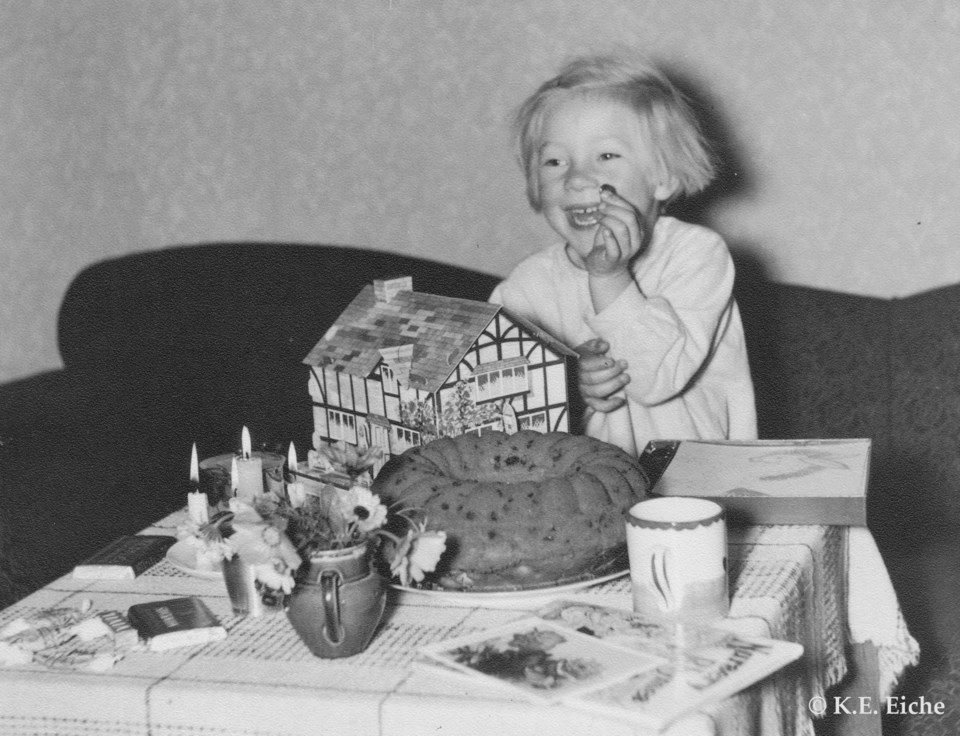A meaningful birthday happened five days ago, on December 25. In North America and Europe, Christmas – celebrating the birth of Christ – has become the most important Christian feast day. The first Christmas didn’t occur during Christ’s lifetime, however. It took centuries for Christmas to be commemorated, and it’s linked to something that we’ll celebrate tomorrow, December 31. But more about that later.
Birthdays are great equalizers. Whether you’re the Pope in the Vatican, King Charles in Buckingham Palace, a homeless person on the street, or a convict in jail – you were born, therefore you have a birthday. Some people even have two – a private and an official birthday.
The English word birthday signifies the day of birth. But you don’t celebrate your birthday the day you’re born, you celebrate it in the years that follow. The Italian word for birthday – compleanno – is more logical. You could translate it as “complete year” – in other words, you have your first birthday upon completing your first year, and so on. The Italians also say anniversario, the same word the French use for birthday – anniversaire. In English "anniversary" generally refers to other kinds of recurring commemorations, such as weddings or great events in history. The German Geburtstag is like the English day of birth. Dutch is similar, with the word geboortedag; but like the Italians, they have another word that expresses the day of the completion of a year – verjaardag.
Celebrating birthdays is a tradition that didn’t become widespread among North American families until the second half of the 19th century and it didn’t take hold properly until the 20th century. The song everyone sings on these occasions – “Happy Birthday to You” – is actually based on one published in 1893 as “Good Morning to You,” a song for little children written by the sisters Mildred and Paty Smith Hill.
In countries where Catholicism is the main religion, it’s the custom to celebrate your name day, either in addition to or instead of, your birthday. If you’re given the name of the saint on whose feast day you were born, your birthday and name day would be one and the same. Of course, you’re in luck if the feast day of the saint after whom you were named falls on a different day from your own birthday. I really got lucky with my name – the feast of Santa Sabina is celebrated in three different Italian towns on three different days, none corresponding to my real birth day. So, if I wanted to go all out, I could have four celebratory days a year. Why not check a saint’s calendar – you never know, you, too, may be able to have several birthday parties each year!
Tomorrow, December 31, last day of the year, is the feast day of Saint Sylvester, which means it’s the anniversary of his “birth” into heaven – the day he died – in 335. Sylvester, a Roman citizen, was born in 285; he became the 33rd pope, Sylvester I, in 314. According to legend, Sylvester converted the Roman Emperor Constantine to Christianity. Thereafter Christianity became the official religion of the Empire. The precise year when the first Christmas was celebrated is debated, although it’s generally accepted that the 35th pope, Julius I (337 to 352) established December 25 as Christ’s official birthday.
As its name states, New Year’s Eve, known in Germany as Silvester, marks the eve of another birthday, that of a new year, with celebrations that tend to be more ebullient than those linked to Christmas. Still, my most significant New Year’s Eve is imprinted on my mind in a different way. I remember it as an event enveloped by a mood of awe and wonder, the kind of hushed mood that might have prevailed at Christ’s birth in Bethlehem. It was December 31, 1999, and I was with my aunt at her home in a village near the Black Forest in southern Germany. Her house was next to a farm with cows. We stood outside on her balcony, watching the fireworks. When they reached their climax at midnight, I became worried about the farm animals being frightened. I turned towards the farmyard and saw one cow after another trundle out of the cowshed into the yard. Their heads were lifted skywards, their eyes wide in amazement. Could they have known they were witnessing something they’d never witnessed before? It was the birth of not just a new year, but of a new century.
Sabine Eiche is a local writer and art historian with a PhD from Princeton University. She is passionately involved in preserving the environment and protecting nature. Her columns deal with a broad range of topics and often include the history (etymology) of words in order to shed extra light on the subject.



